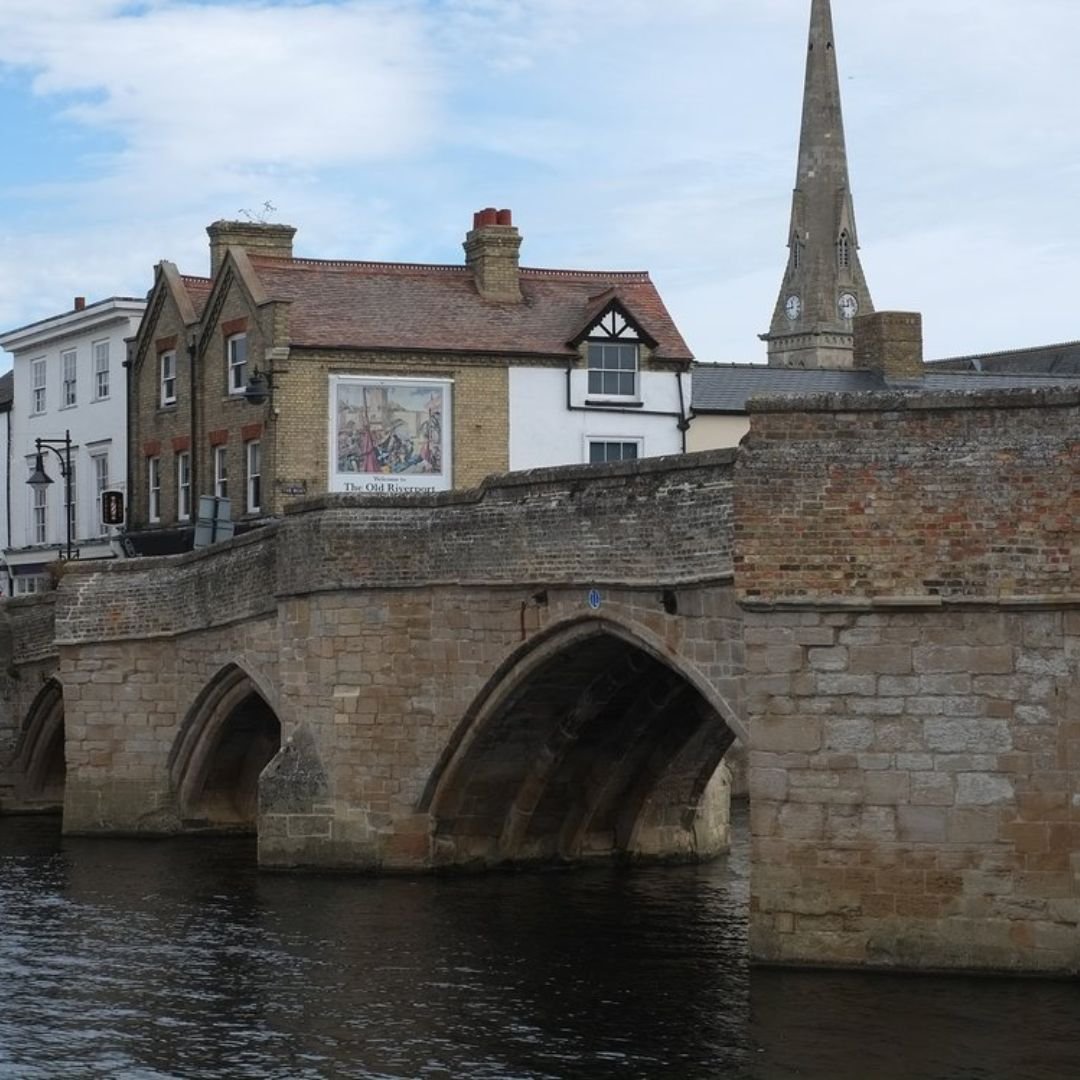St. Ives Bridge, Cambridgeshire: 15th Century Gem
St Ives Bridge in Cambridgeshire is one of only four bridges in England to have a chapel.
The St Ives settlement was developed by the monks of Ramsey Abbey who built the town's first bridge, a wooden structure, in 1107.
In 1414, it was decided to replace this bridge with a stone arch bridge, which was completed in 1425, the chapel being added the following year.
Bridge chapels were once a common feature of major bridges throughout Britain.
Mostly built during the 14th or 15th centuries, they were often chantry chapels where prayers were said for the souls of the founders and benefactors of the bridge.
They also provided a place for travellers and pilgrims to attend mass and pray for a safe journey.
Although sometimes built on land at the end of the bridge, bridge chapels were often built into the bridge structure itself.
In some instances, the priest would be responsible for collecting tolls from bridge users.
In England, bridge chapels fell out of use with the Reformation, when the Abolition of Chantries Acts, 1545 and 1547 led either to their demolition or to their conversion to secular use.
Today, however, only a few survive.
Three chapels on bridges in Rotherham, Wakefield and St Ives; one small building believed to have been a chapel or shrine in Bradford on Avon; and two at the ends of bridges in Derby and Rochester.
There is also the ruin of a chapel 5th century bridge chapel in Cromford, Derbyshire.
During the English Civil War, St Ives Bridge was partially blown up by the troops of Oliver Cromwell to prevent King Charles I's troops approaching London from the Royalist base in Lincolnshire.
During the war, and for some period afterwards, the gap was covered with a drawbridge.
When the bridge was rebuilt in 1716, the shape of the new arches at the southern end was in accordance with the style of the period.
Therefore, it left the bridge with two rounded arches on its South side and two Gothic arches on the North.
The bridge is only one carriage wide and in good order and is a particularly attractive sight in a charming small town.
The chapel was restored in 1930, after periods of use as a toll house, inn and as a private residence.
By 1736 it was being used as accommodation, and in that year two extra floors were added.
These remained until the early 20th century until removed as part of the restoration work and, as a result, the roof is modern.
An unusual feature is the crypt which sits two metres above water level.
The bridge and the chapel are now Grade I Listed Buildings and a Scheduled Ancient Monument.
The bridge is one of nine Scheduled Ancient Monument Grade 1 in Cambridgeshire.
All maintenance must be carried out in a sympathetic manner to preserve its aesthetic and functional aspects.
South of the bridge, the London Road proceeded across a swampy area on a causeway with piecemeal bridges built by various benefactors, from time to time and as the currents of the water shifted.
In 1755, it became the responsibility of the Bury to Stratton Turnpike Trust. The condition was still unsatisfactory when the Trust was renewed by an Act of 1818.
At this point firm action was taken and the causeway was totally rebuilt and opened in 1822.
With an astonishing 55 arches, it is the longest road causeway - as well as having the largest number of brick arches - in the country.
Today, the bridge has excellent reviews on TripAdvisor, one recent visitors said: “Picturesque and a most relaxing area by the river, great to eat, drink and to explore the area not to be missed.”
Another person added: “As a history buff, this bridge is unique.
“It has a history and supposedly, as told to me by the local people living there, the arches of the bridge are unique and only one of a few in the UK with that design.
”The chapel on the bridge was a nice visit too.”
St Ives is a delightful little market town with a picturesque riverside setting.
The wide main street is lined with many attractive buildings and the old Quay, alongside the river, has several handsome oldy-worldy properties.
One of the finest of these is an Jacobean manor house (circa 1600), with superb brick chimneys.
The market square (Market Hill), has a good variety of shops, from national chains to small specialist outlets.
There is also a very good selection of pubs, clubs and restaurants for such a small town.
The Corn Exchange and the Post Office buildings on Market Hill are both Victorian.
It’s a lovely place to explore for when you’re next in Cambridgeshire.
If you enjoyed this blog post, please follow Exploring GB on Facebook for daily travel content and inspiration.
Don’t forget to check out our latest blog posts below!
Thank you for visiting Exploring GB.





















